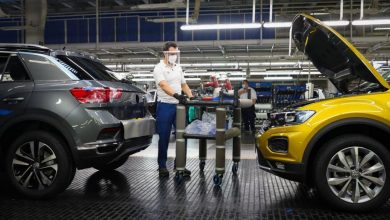
The SWOT challenge the automotive industry
Not since Henry Ford perfected his first production line in search of a “faster horse” has the automotive industry faced such sweeping change. How is it standing up to the challenge?
Strengths
World leading product development functions: Today’s established carmakers have R&D capacity way beyond any new entrant’s capacity. ‘The quality and reliability of the product and the process is second to none”, says Mike Woodward, Deloitte’s UK Automotive Leader. “They’ve spent 15 years honing their product development processes and producing a product that has a high level of reliability and quality associated with it.”
Cost per mile will drop: This is due to falling driver costs, longer vehicle lives, new energy sources, technologies and mobility scaling.
Consumer trust remains strong: Despite industry disruption, consumers still prefer to put their families into vehicles made by established carmakers. A recent Trustpilot report showed that nearly 9 in 10 respondents said the auto manufacturer’s reputation was also important when choosing a car.
Fewer cars are being built but they will be doing more miles. Justin Benson, Head of Automotive at KPMG, estimates that by 2030 the amount of cars being built outside China will fall from around 60 million to around 45 million.
Weaknesses
Weak demand for private ownership of cars powered by the internal combustion engine: This is caused in part by the cost of insurance and fuel, as well as by a decline in commuting. Between 1995/97 and 2013/14, England’s population grew 12% while the total number of annual commuting journeys decreased from 8.5 billion to 7.9 billion.
Decline of the aftermarket: The growth of EVs and hybrids has profound implications for the traditional aftermarket model. Deloitte’s UK Automotive Leader Mike Woodward estimates that by 2030, the size of that market will fall to around 25% of its current levels – a drop that represents an existential threat to some carmakers.
Not as many drivers (and owners). Estimates suggest a consistent drop of around 7% a year in the numbers of new drivers applying for a licence
Opportunities
Demand for mobility on the increase as urban populations grow: Passenger miles will grow by 10% following the growth of mega-cities and their suburbs.
Demand for autonomy endures: According to a UK government white paper, nearly 9 in 10 car users in England (87%) agree that their current lifestyle means they need to own a car, with 94% saying they enjoy the freedom and independence their car gives them.
A more compelling sector: Over the next five years car companies have got to completely change their supply chains, representing a massive opportunity for new entrants.
The rise of electric vehicles. “Some research suggests 15% of all new cars will be battery/electric by 2025,” says Justin Benson, KPMG’s Head of Automotive.
Threats
New entrants catching up: Mike Woodward, Deloitte’s UK Automotive Leader, expects to see hundreds of smaller, niche manufacturers emerge in the coming decade, taking advantage of lower barriers to entry. “If the Teslas, BYDs and Rivians of this world bring out these vehicles and prove to be successful, quality and reliability will be seen to be a given rather than a differentiator.”
Increased pressure to follow the Clean Air Agenda: The Royal College of Physicians estimates that over £20bn a year is spent on the social costs of the deaths and health problems resulting from exposure to air pollution. That will underpin the drive towards stricter emission standards, congestion charging and low emission zones, driven by activist local councils in search of votes.
The rise of electric vehicles: “Some research suggests 15% of all new cars will be battery/ electric by 2025,” says Justin Benson, KPMG’s Head of Automotive
Font: Icaew





